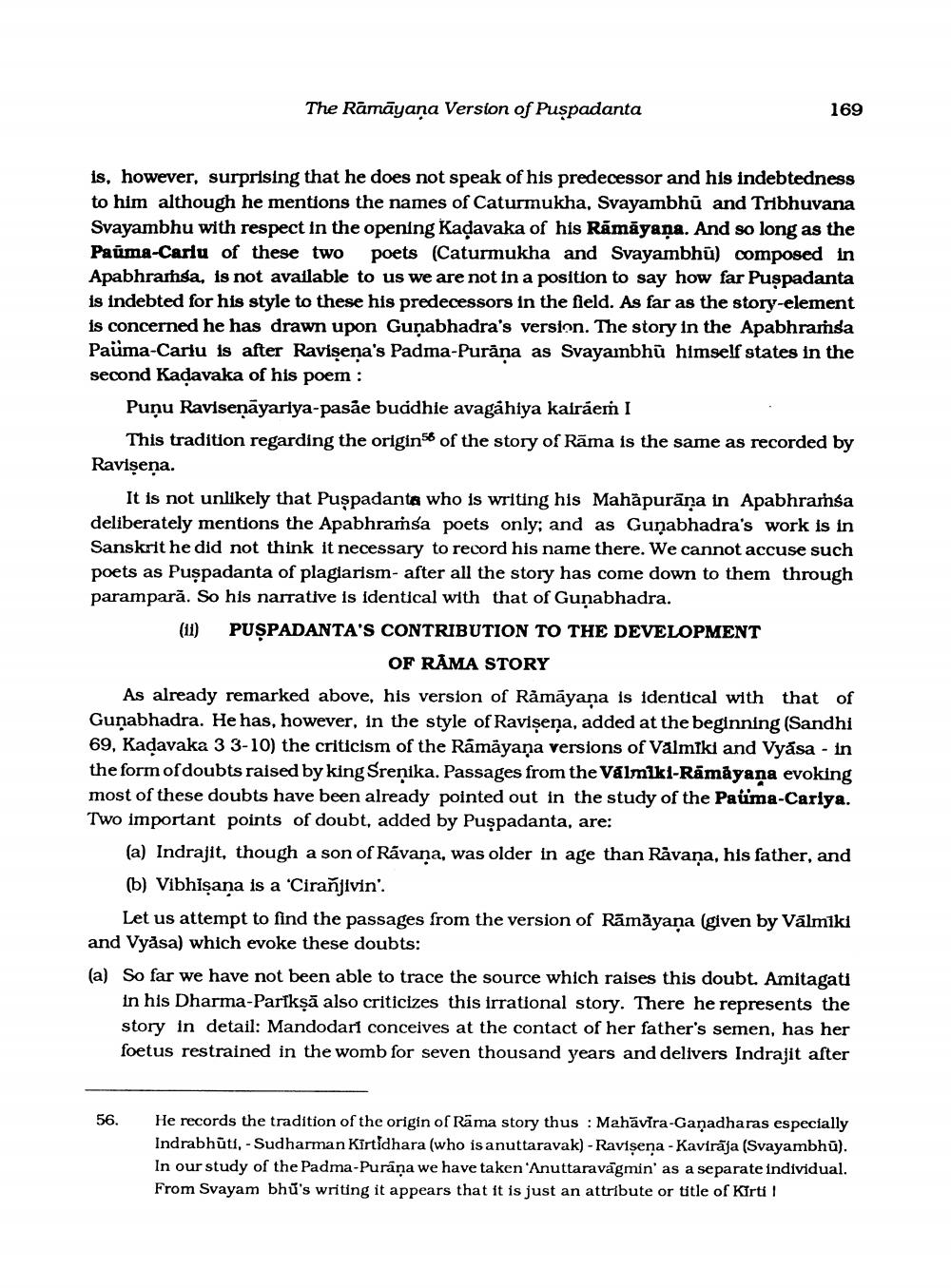________________
The Rāmāyaṇa Version of Puşpadanta
169
is, however, surprising that he does not speak of his predecessor and his indebtedness to him although he mentions the names of Caturmukha, Svayambhū and Tribhuvana Svayambhu with respect in the opening Kadavaka of his Rāmāyaṇa. And so long as the Paūma-Carlu of these two poets (Caturmukha and Svayambhū) composed in Apabhrarhsa, is not available to us we are not in a position to say how far Puşpadanta is indebted for his style to these his predecessors in the field. As far as the story-element is concerned he has drawn upon Guņabhadra's version. The story in the Apabhramsa Paüma-Carlu is after Ravişena's Padma-Purāna as Svayambhū himself states in the second Kadavaka of his poem :
Puņu Ravisenāyariya-pasảe buddhie avagahiya kairáem I
This tradition regarding the origins of the story of Rāma is the same as recorded by Ravişena.
It is not unlikely that Puşpadanta who is writing his Mahāpurāņa in Apabhrarnsa deliberately mentions the Apabhramsa poets only; and as Guņabhadra's work is in Sanskrit he did not think it necessary to record his name there. We cannot accuse such poets as Puspadanta of plagiarism- after all the story has come down to them through parampară. So his narrative is identical with that of Guņabhadra. (11) PUSPADANTA'S CONTRIBUTION TO THE DEVELOPMENT
OF RAMA STORY As already remarked above, his version of Råmāyaṇa is identical with that of Guņabhadra. He has, however, in the style of Ravişeņa, added at the beginning (Sandhi 69, Kadavaka 33-10) the criticism of the Rāmāyaṇa versions of Valmiki and Vyása - in the form of doubts raised by king Sreņika. Passages from the Vālmlkl-Rāmāyana evoking most of these doubts have been already pointed out in the study of the Pauima-Cariya. Two important points of doubt, added by Puşpadanta, are:
(a) Indrajit, though a son of Rávana, was older in age than Ravaņa, his father, and (b) Vibhisana is a 'Ciranjivin'.
Let us attempt to find the passages from the version of Rāmāyana (given by Vālmiki and Vyåsa) which evoke these doubts: (a) So far we have not been able to trace the source which raises this doubt. Amitagati
in his Dharma-Parskņā also criticizes this irrational story. There he represents the story in detail: Mandodari conceives at the contact of her father's semen, has her foetus restrained in the womb for seven thousand years and delivers Indrajit after
56.
He records the tradition of the origin of Räma story thus : Mahāvira-Ganadharas especially Indrabhūti, - Sudharman Kirtidhara (who is anuttaravak) - Ravişena - Kaviraja (Svayambhū). In our study of the Padma-Purana we have taken'Anuttaravágmin' as a separate individual. From Svayam bhữ's writing it appears that it is just an attribute or title of Kirti!




